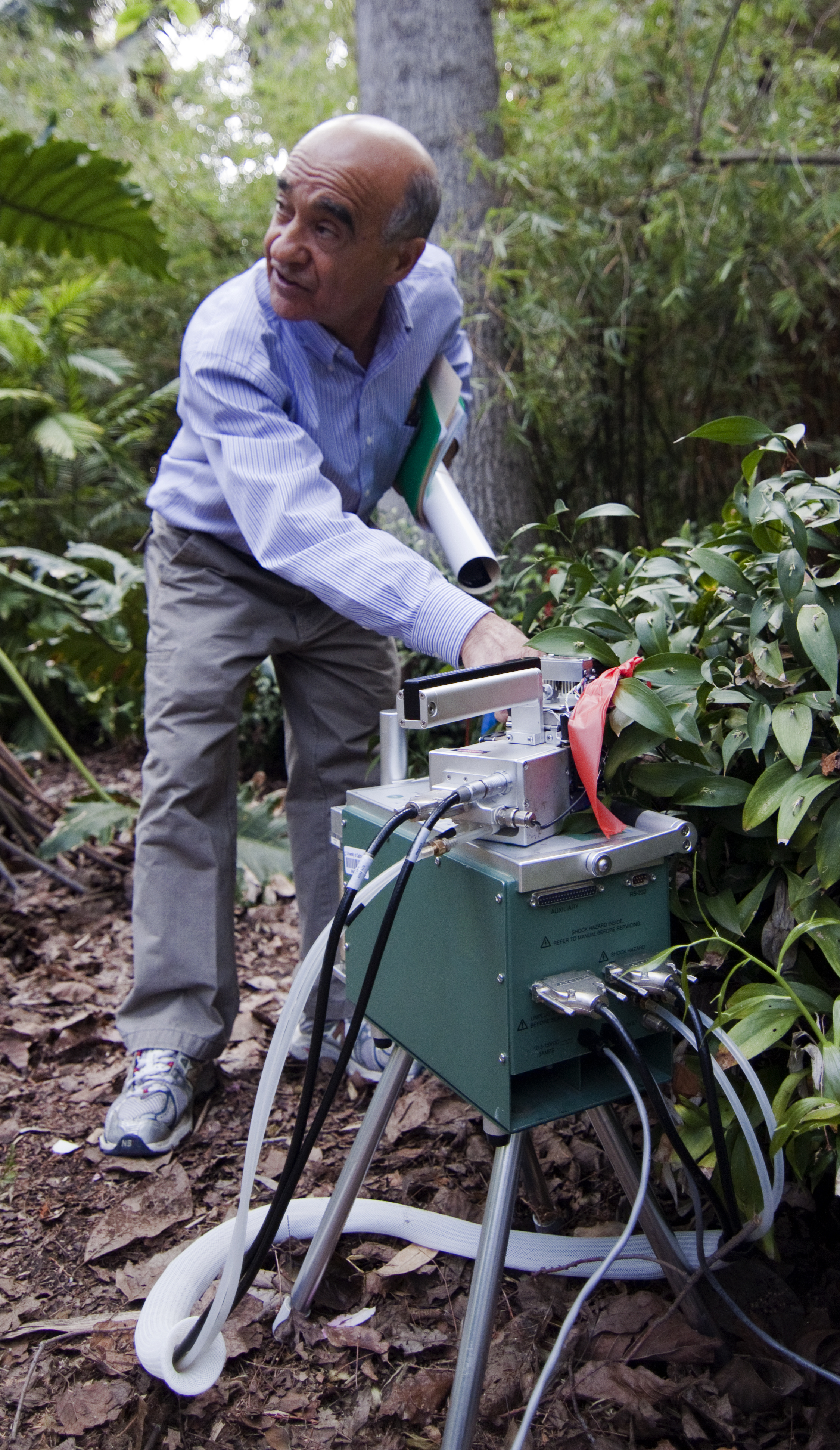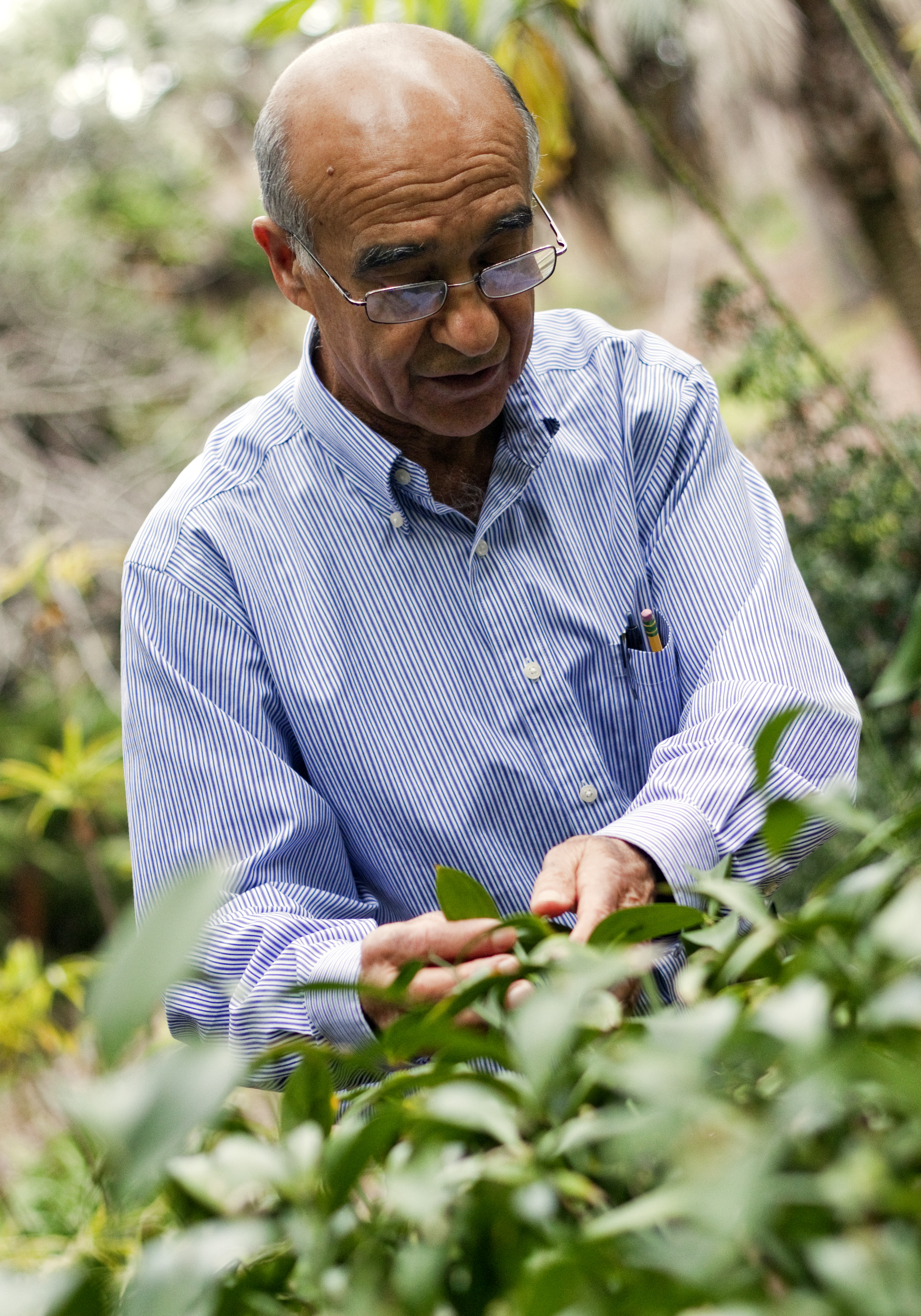
Biology Professor Rasoul Sharifi uses a gas exchange machine to measure the amount of carbon dioxide a plant absorbs to learn how it makes its own nutrients.
Before freeways and houses defined what is now urban Los Angeles, the area was an ecosystem of diverse plants and animals that adapted over hundreds of thousands of years to live in the hot, dry climate.
But a tidbit of that old environment can still be found in the Mildred E. Mathias Botanical Garden.
Tucked away in a small canyon behind the Botany Building, the garden’s 5,000 plant species are divided into six sections, each representing an environment from a different part of the world.
Whether the plants are from the arid Australian desert or a tropical rainforest, garden workers give them the right amount of sunlight, water and soil nutrients to best mimic their natural environment, said Joan Muench, garden manager.
The diverse collection is convenient for Rasoul Sharifi, a biology professor who uses a Mediterranean plant called the butcher’s broom for his research on plant physiology and adaptation mechanisms.
Although most plant researchers work in the controlled environment of a greenhouse nearby, the garden has a large butcher’s broom plant that is ideal for Sharifi’s work.
Sharifi wants to know what allows the large, bushy, tough plant to survive in a climate dry enough that it could go a year without rainfall. But instead of traveling to the Mediterranean basin to find one, he goes to the garden.
Sharifi’s student researchers Sharon Wu, a second-year biology student, and Andy Truong, a fourth-year business economics student, use a machine called a gas exchange system specially built to measure the amount of carbon dioxide the plant absorbs to learn how it makes its own nutrients.
Analyzing the data can yield important information about how this plant can tolerate the dry Mediterranean climate. Such information can be used to educate others about the importance of keeping an ecosystem’s balance, Sharifi said.
“Everything is dependant on these green leaves and how they function,” Sharifi said. “That is why it’s important for us to know our environment and how they can live.”
Wu has also researched the dwindling communities of sage plants along the Southern California coastline, looking at the differences between each species and how their different physical traits let them survive in one common place.
Although habitat destruction and invasive plants have destroyed about 90 percent of these small, fragrant shrubs in the wild, Wu is glad the garden keeps many different native sage species in an area where they can flourish.
The sage collection is ideal for teaching students about preserving California’s natural ecosystem and balance, Sharifi said.
“With all of this global climate change and invasive plant species, we have to start thinking about how we can improve our environment, how we can educate young students and children to take care of the environment,” Sharifi said.
Elementary school teachers and university professors both use the 7.5-acre garden year-round for educational tours, Muench said.
Among the bustling community of UCLA, the exotic plants also serve as a getaway for students and faculty, she added.
“It’s like a little oasis in the midst of madness,” she said.
